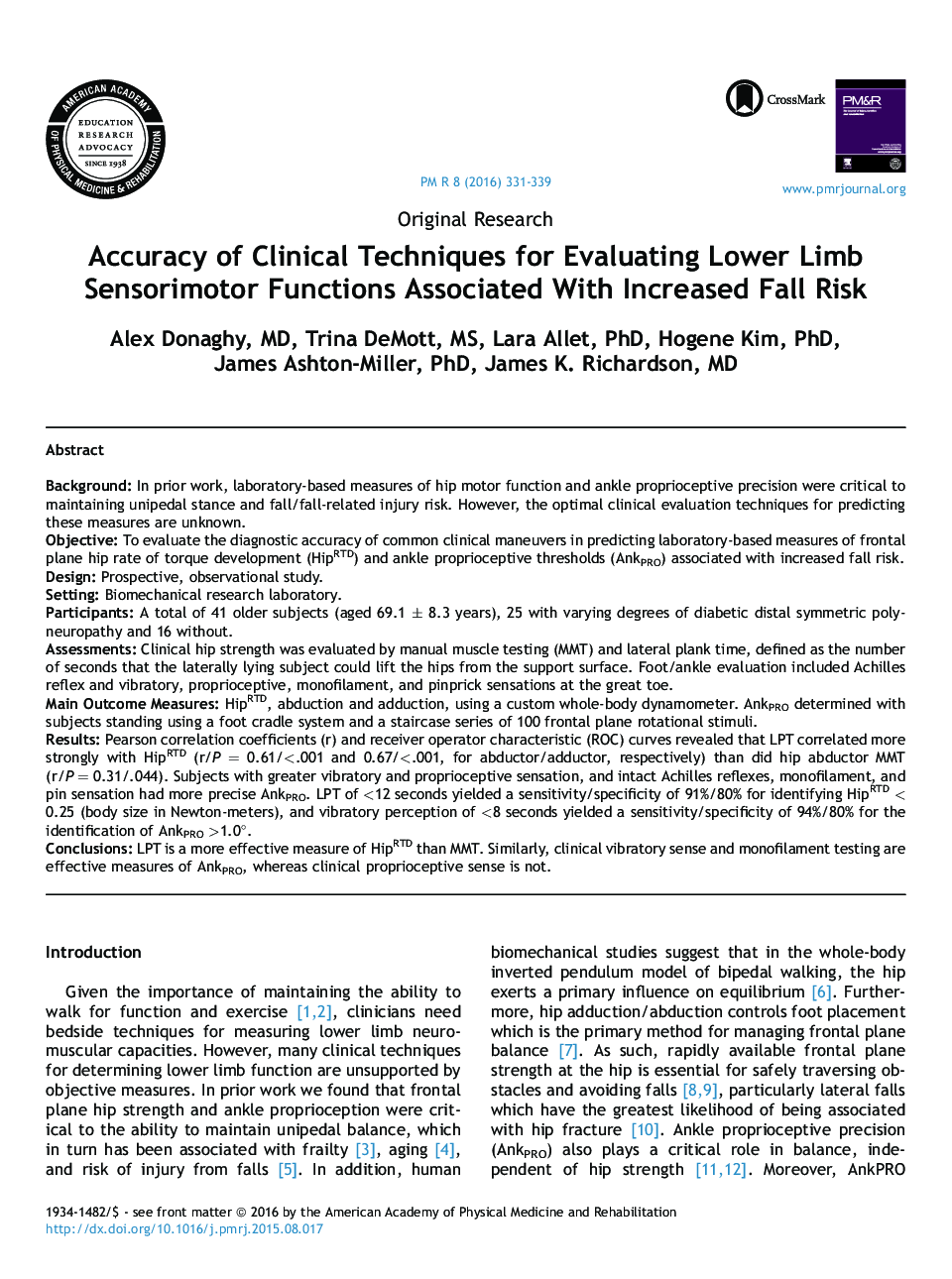| کد مقاله | کد نشریه | سال انتشار | مقاله انگلیسی | نسخه تمام متن |
|---|---|---|---|---|
| 2714931 | 1145294 | 2016 | 9 صفحه PDF | دانلود رایگان |
BackgroundIn prior work, laboratory-based measures of hip motor function and ankle proprioceptive precision were critical to maintaining unipedal stance and fall/fall-related injury risk. However, the optimal clinical evaluation techniques for predicting these measures are unknown.ObjectiveTo evaluate the diagnostic accuracy of common clinical maneuvers in predicting laboratory-based measures of frontal plane hip rate of torque development (HipRTD) and ankle proprioceptive thresholds (AnkPRO) associated with increased fall risk.DesignProspective, observational study.SettingBiomechanical research laboratory.ParticipantsA total of 41 older subjects (aged 69.1 ± 8.3 years), 25 with varying degrees of diabetic distal symmetric polyneuropathy and 16 without.AssessmentsClinical hip strength was evaluated by manual muscle testing (MMT) and lateral plank time, defined as the number of seconds that the laterally lying subject could lift the hips from the support surface. Foot/ankle evaluation included Achilles reflex and vibratory, proprioceptive, monofilament, and pinprick sensations at the great toe.Main Outcome MeasuresHipRTD, abduction and adduction, using a custom whole-body dynamometer. AnkPRO determined with subjects standing using a foot cradle system and a staircase series of 100 frontal plane rotational stimuli.ResultsPearson correlation coefficients (r) and receiver operator characteristic (ROC) curves revealed that LPT correlated more strongly with HipRTD (r/P = 0.61/<.001 and 0.67/<.001, for abductor/adductor, respectively) than did hip abductor MMT (r/P = 0.31/.044). Subjects with greater vibratory and proprioceptive sensation, and intact Achilles reflexes, monofilament, and pin sensation had more precise AnkPRO. LPT of <12 seconds yielded a sensitivity/specificity of 91%/80% for identifying HipRTD < 0.25 (body size in Newton-meters), and vibratory perception of <8 seconds yielded a sensitivity/specificity of 94%/80% for the identification of AnkPRO >1.0°.ConclusionsLPT is a more effective measure of HipRTD than MMT. Similarly, clinical vibratory sense and monofilament testing are effective measures of AnkPRO, whereas clinical proprioceptive sense is not.
Journal: PM&R - Volume 8, Issue 4, April 2016, Pages 331–339
